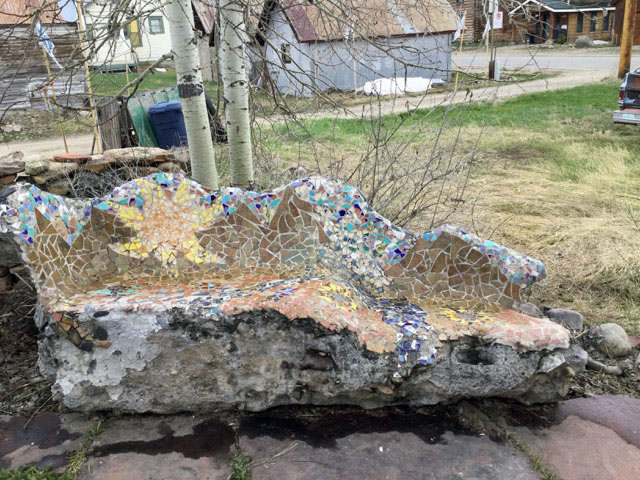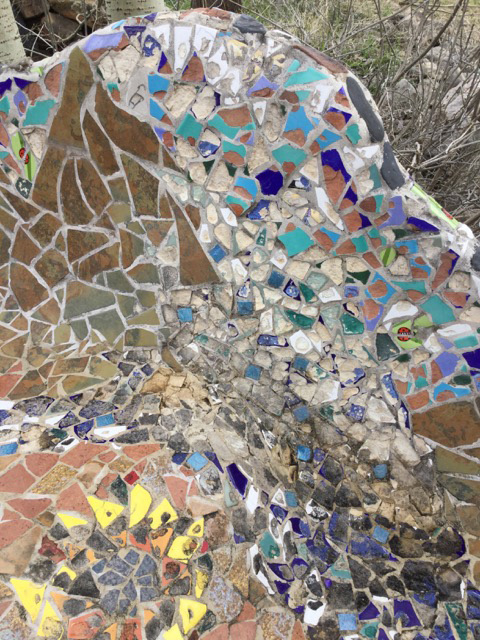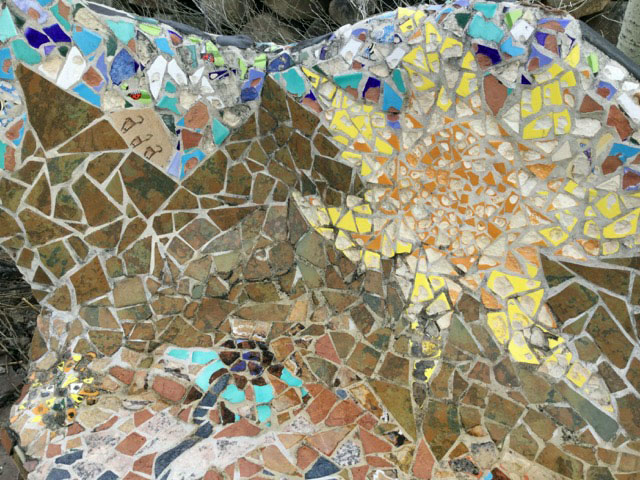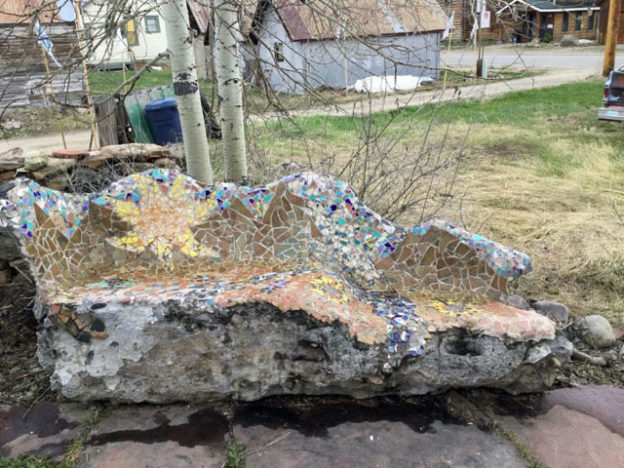A few years ago, Karen J created a mosaic bench in her backyard using mining debris (large stones), cement, and chicken wire to form the base, which is similar the methods we recommend in our instructions for creating bases for outdoor mosaic sculptures. Karen modeled her bench after those made by the great mosaic architect Gaudi in Park Guell in sunny Barcelona, and she used brightly colored ceramic tile just as Gaudi had used. The problem is that Karen’s backyard is in Colorado, and so her mosaic experienced many long and hard freezes that a mosaic in Barcelona would never see.

Ceramic Tile Is Vulnerable To Freeze Damage
Glass mosaic tile is non-porous, and so water cannot seep in and freeze and crack it, and so glass is preferred for outdoor use, as is porcelain tile for the same reason. On the other hand, ceramic tile tile is very porous and soft, and so water can penetrate it (through tiny cracks in the glazing). Once this water freezes and expands, it cracks the ceramic tile and often causes the face of the tile to flake off.

In the photo above, you can see how some colors were more resistant to freeze damage than others. This difference was not due to the color but to the variety of the tile: some brands of ceramic are harder and less porous than others. Also, some brands have thicker glazes, and that can also affect how permeable the tile is to water.
Preventing Freeze Damage
You can minimize freeze damage by sealing your finished mosaic with multiple applications of a tile and grout sealer from your local building material store. Avoid ordering sealers online during winter months because water-based silicone sealers ruin if they freeze during shipment. You should also clean and reseal the mosaic each fall. Small mosaics such as mosaic stepping stones can be brought inside for the winter.



Leave a Reply